Floating Silt Curtains
Floating silt curtains are a type of barrier that is used in marine construction, dredging and remediation projects to control the amount of silt and sediment in a body of water. In essence, it’s a temporary wall deployed in water bodies to control the movement of suspended particles like soil, clay, and debris. Floating silt curtains can be separated into three different types depending on the water conditions. Read our Frequently Asked Questions. American Marine, a division of Elastec, has been manufacturing quality turbidity curtains since 1967. We offer some models in-stock from our online store. Contact us to request silt curtain pricing for other models. View DOT requirements by state.
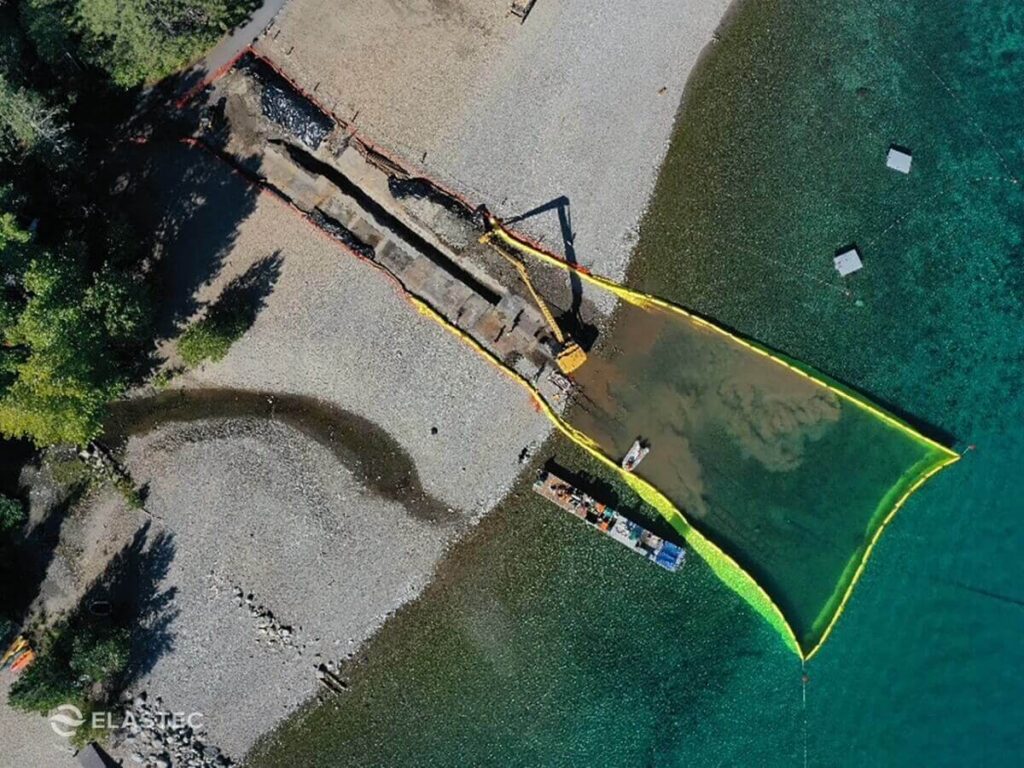
Silt Curtain Types
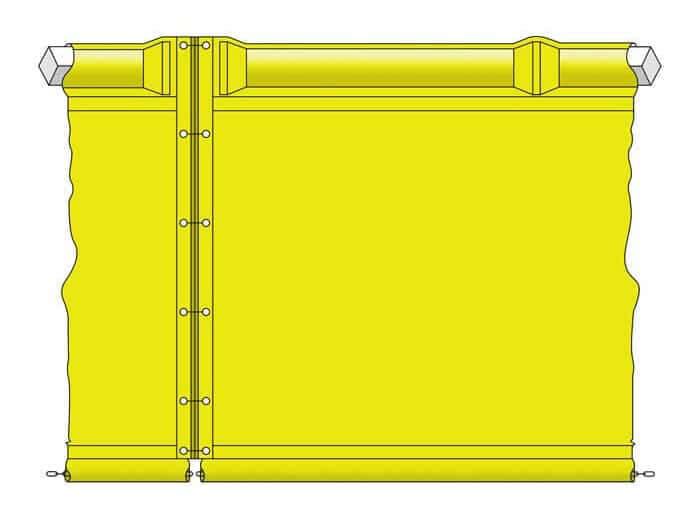
Type 1 Silt Curtains
Suitable for calm water, with a lightweight skirt for easy deployment.
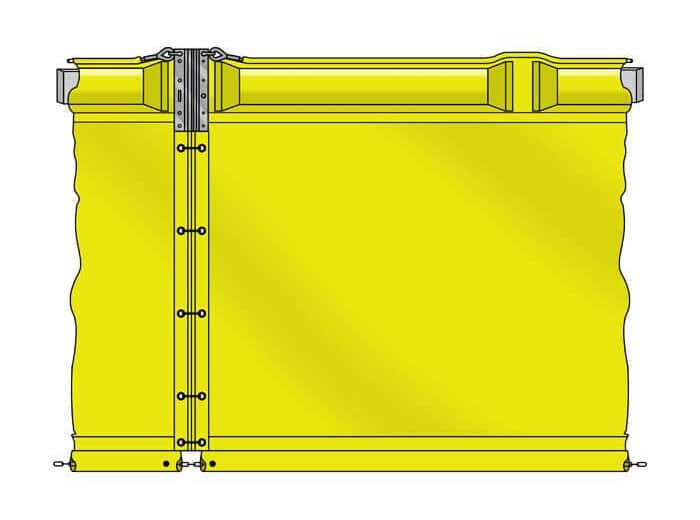
Type 2 Silt Curtains
Handles moderate currents with a heavier skirt and additional reinforcement.
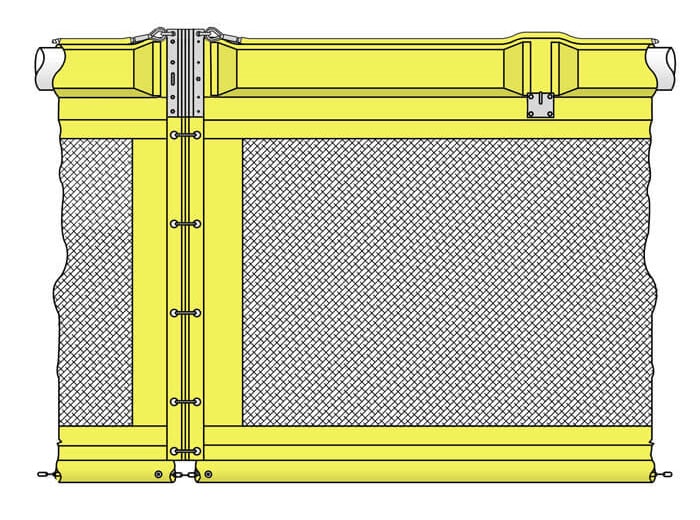
Type 3 Silt Curtains
Designed for challenging environments like fast-flowing rivers, with robust construction and anchoring systems.
Choosing the Right Silt Curtain
Several factors influence the selection of a suitable curtain. Tell us about your project. Our sales team can talk with you and recommend the right curtain.
- Water depth and conditions: Consider current speeds, wave action, and bottom topography.
- Purpose and regulations: Understand the specific project requirements and any local environmental regulations.
- Material and durability: Choose materials based on expected environmental stressors and longevity needs.
Floating Silt Curtain Applications
These versatile barriers find use in various situations:
- Construction sites: Confining sediment runoff generated by excavation, pile driving, and other activities near water bodies.
- Dredging operations: Containing disturbed sediments during dredging projects to minimize environmental impact.
- Shoreline restoration: Protecting sensitive areas during restoration activities or preventing erosion.
- Oil spill containment: Limiting the spread of oil slicks and facilitating cleanup efforts.
- Aquaculture: Creating enclosed, protected areas for fish farming.
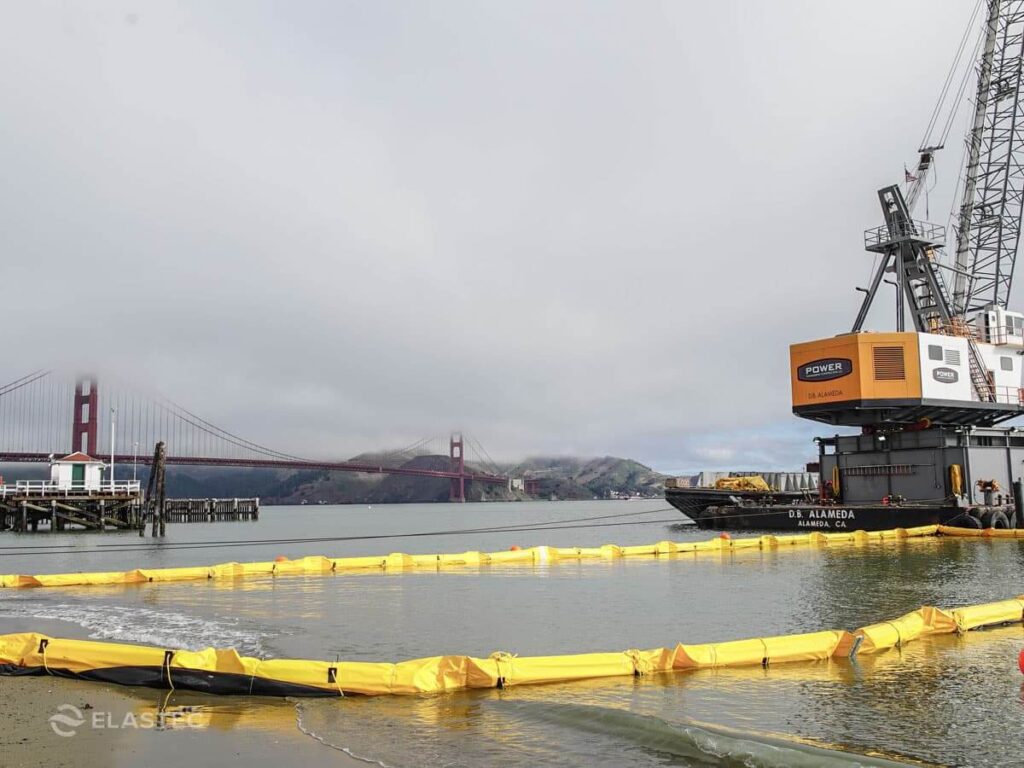
Floating Silt Curtain Frequently Asked Questions
Are silt curtains in stock and ready to ship?
We offer some models of silt curtains in-stock from our online store. Account for lead times of a few weeks to produce other models of curtains in the factory. Most curtains will be custom and not off the shelf.
How much curtain do I need for my project?
Account for the anchor rodes. Best anchorage for silt curtains is a 5:1 slope. In 10′ of water you will have 50′ of anchor lines on one or both side of the curtain. Possibly into the work area.
How important are water conditions?
Water conditions (wind, wave height, flow rate) are important to ensuring proper anchorage is being used. Account for pull from intake structures, ice, debris, and wake from vessels.
How are deeper curtains affected by tidal flow?
The deeper the curtain, the calmer the conditions need to be. A curtain 30′ deep in 2 knot tidal flow will only have an effective depth of 13′ and will be difficult to keep in place even with heavy anchoring.
How deep should my curtain be?
Curtains should not touch the bottom. Flow of water is not going to be stopped by a fabric curtain. You cannot sand bag or add additional weight to the bottom of the curtain to keep it down. This will tear the curtain. Also, in calm situations, sediment can build up on the curtain making it impossible to retreive when the work is finished. Curtains will perform better the more parallel they are to the flow.
QUESTIONNAIRE
In order that we may recommend the best Silt Curtain for your project, please provide the following information. We have included some questions that will help us better understand your needs. Please answer as many as possible. If the flow rate is high, Elastec can provide modeling data to determine anchor spacing and feasibility of systems.